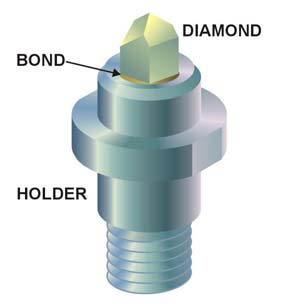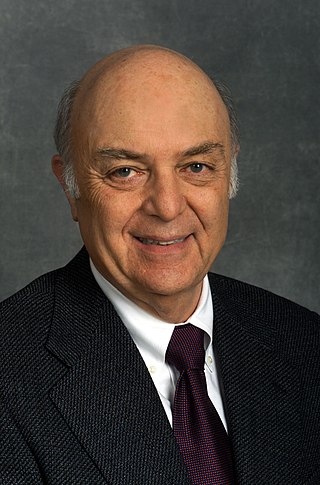
Condensed matter physics is the field of physics that deals with the macroscopic and microscopic physical properties of matter,especially the solid and liquid phases that arise from electromagnetic forces between atoms and electrons. More generally,the subject deals with condensed phases of matter:systems of many constituents with strong interactions among them. More exotic condensed phases include the superconducting phase exhibited by certain materials at extremely low cryogenic temperatures,the ferromagnetic and antiferromagnetic phases of spins on crystal lattices of atoms,the Bose–Einstein condensates found in ultracold atomic systems,and liquid crystals. Condensed matter physicists seek to understand the behavior of these phases by experiments to measure various material properties,and by applying the physical laws of quantum mechanics,electromagnetism,statistical mechanics,and other physics theories to develop mathematical models and predict the properties of extremely large groups of atoms.
Metallic hydrogen is a phase of hydrogen in which it behaves like an electrical conductor. This phase was predicted in 1935 on theoretical grounds by Eugene Wigner and Hillard Bell Huntington.
A room-temperature superconductor is a hypothetical material capable of displaying superconductivity at temperatures above 0 °C,which are commonly encountered in everyday settings. As of 2023,the material with the highest accepted superconducting temperature was highly pressurized lanthanum decahydride,whose transition temperature is approximately 250 K (−23 °C) at 200 GPa.

A superhard material is a material with a hardness value exceeding 40 gigapascals (GPa) when measured by the Vickers hardness test. They are virtually incompressible solids with high electron density and high bond covalency. As a result of their unique properties,these materials are of great interest in many industrial areas including,but not limited to,abrasives,polishing and cutting tools,disc brakes,and wear-resistant and protective coatings.

Superconductivity is the phenomenon of certain materials exhibiting zero electrical resistance and the expulsion of magnetic fields below a characteristic temperature. The history of superconductivity began with Dutch physicist Heike Kamerlingh Onnes's discovery of superconductivity in mercury in 1911. Since then,many other superconducting materials have been discovered and the theory of superconductivity has been developed. These subjects remain active areas of study in the field of condensed matter physics.

Marvin Lou Cohen is an American–Canadian theoretical physicist. He is a physics professor at the University of California,Berkeley. Cohen is a leading expert in the field of condensed matter physics. He is widely known for his seminal work on the electronic structure of solids.
Crystal structure prediction (CSP) is the calculation of the crystal structures of solids from first principles. Reliable methods of predicting the crystal structure of a compound,based only on its composition,has been a goal of the physical sciences since the 1950s. Computational methods employed include simulated annealing,evolutionary algorithms,distributed multipole analysis,random sampling,basin-hopping,data mining,density functional theory and molecular mechanics.

Amit Goyal is a SUNY Distinguished Professor and a SUNY Empire Innovation Professor at SUNY-Buffalo. He leads the Laboratory for Heteroepitaxial Growth of Functional Materials &Devices. He is also Director of the New York State Center of Excellence in Plastics Recycling Research &Innovation,an externally funded center with initial funding of $4.5M for three years at SUNY-Buffalo. He is the founding director of the multidisciplinary and transdisciplinary RENEW Institute at SUNY-Buffalo in Buffalo,New York and served as director from 2015-2021. RENEW is an internally funded research institute at SUNY-Buffalo. For his contributions to UB,in 2019,he was awarded the University at Buffalo or SUNY-Buffalo President's Medal,which recognizes “outstanding scholarly or artistic achievements,humanitarian acts,contributions of time or treasure,exemplary leadership or any other major contribution to the development of the University at Buffalo and the quality of life in the UB community.”This is one of the highest recognitions given at the university.
Iron tetraboride (FeB4) is a superhard superconductor (Tc <3K) consisting of iron and boron. Iron tetraboride does not occur in nature and can be created synthetically. Its molecular structure was predicted using computer models.

Laura H. Greene is the Marie Krafft Professor of Physics at Florida State University and chief scientist at the National High Magnetic Field Laboratory. She was previously a professor of physics at the University of Illinois at Urbana-Champaign. In September 2021,she was appointed to the President's Council of Advisors on Science and Technology (PCAST).

Artem R. Oganov is a Russian theoretical crystallographer,mineralogist,chemist,physicist,and materials scientist. He is known mostly for his works on computational materials discovery and crystal structure prediction,studies of matter at extreme conditions,including matter of planetary interiors.
Julia Wan-Ping Hsu is an American materials scientist. In her research,she uses scanning probe microscopy to study the nanostructure,optics,and photoelectric properties of thin films and crystal surfaces,with particular application to solar cells,and has used nanotransfer printing to make electrical connections to single-molecule sensing devices. She is a professor of materials science and engineering at the University of Texas at Dallas,where she holds the Texas Instruments Distinguished Chair in Nanoelectronics.
A polyhydride or superhydride is a compound that contains an abnormally large amount of hydrogen. This can be described as high hydrogen stoichiometry. Examples include iron pentahydride FeH5,LiH6,and LiH7. By contrast,the more well known lithium hydride only has one hydrogen atom.
Sinéad Majella Griffin is an Irish physicist working at Lawrence Berkeley National Laboratory on condensed matter physics and materials science. She won the 2017 Swiss Physical Society Award in General Physics.

William J. Nellis is an American physicist. He is an Associate of the Physics Department of Harvard University. His work has focused on ultra-condensed matter at extreme pressures,densities and temperatures achieved by fast dynamic compression. He is most well-known for the first experimental observation of a metallic phase of dense hydrogen,a material predicted to exist by Eugene Wigner and Hillard Bell Huntington in 1935.
Arthi Jayaraman is an Indian-American scientist who is the Centennial Term Professor for Excellence in Research and Education at the University of Delaware. Her research considers the development of computational models to better understand polymer nanocomposites and biomaterials. Jayaraman was elected Fellow of the American Physical Society in 2020.

Wendy Li-Wen Mao is an American geologist who is a professor at SLAC National Accelerator Laboratory. Her research considers the mineral physics of planetary interiors,new materials under extreme environments and novel characterisation techniques. In 2021 she was elected Fellow of the European Association of Geochemistry.

Nitrogen pentahydride,also known as ammonium hydride is a hypothetical compound with the chemical formula NH5. There are two theoretical structures of nitrogen pentahydride. One structure is trigonal bipyramidal molecular geometry type NH5 molecule. Its nitrogen atom and hydrogen atoms are covalently bounded,and its symmetry group is D3h. Another predicted structure of nitrogen pentahydride is an ionic compound,composed of an ammonium ion and a hydride ion (NH4+H−). Until now,no one has synthesized this substance,or proved its existence,and related experiments have not directly observed nitrogen pentahydride. It is only speculated that it may be a reactive intermediate based on reaction products. Theoretical calculations show this molecule is thermodynamically unstable. The reason might be similar to the instability of nitrogen pentafluoride,so the possibility of its existence is low. However,nitrogen pentahydride might exist in special conditions or high pressure. Nitrogen pentahydride was considered for use as a solid rocket fuel for research in 1966.
Elbio Rubén Dagotto is an Argentinian-American theoretical physicist and academic. He is a distinguished professor in the department of physics and astronomy at the University of Tennessee,Knoxville,and Distinguished Scientist in the Materials Science and Technology Division at the Oak Ridge National Laboratory.
Adriana Moreo is an Argentine-American condensed matter physicist whose research involves the computer simulation of superconductors,oxides of transition metals,graphene,and other strongly correlated materials. She is a professor in the Department of Physics &Astronomy at the University of Tennessee and a member of the research staff in the Materials Science and Technology Division of the Oak Ridge National Laboratory.










